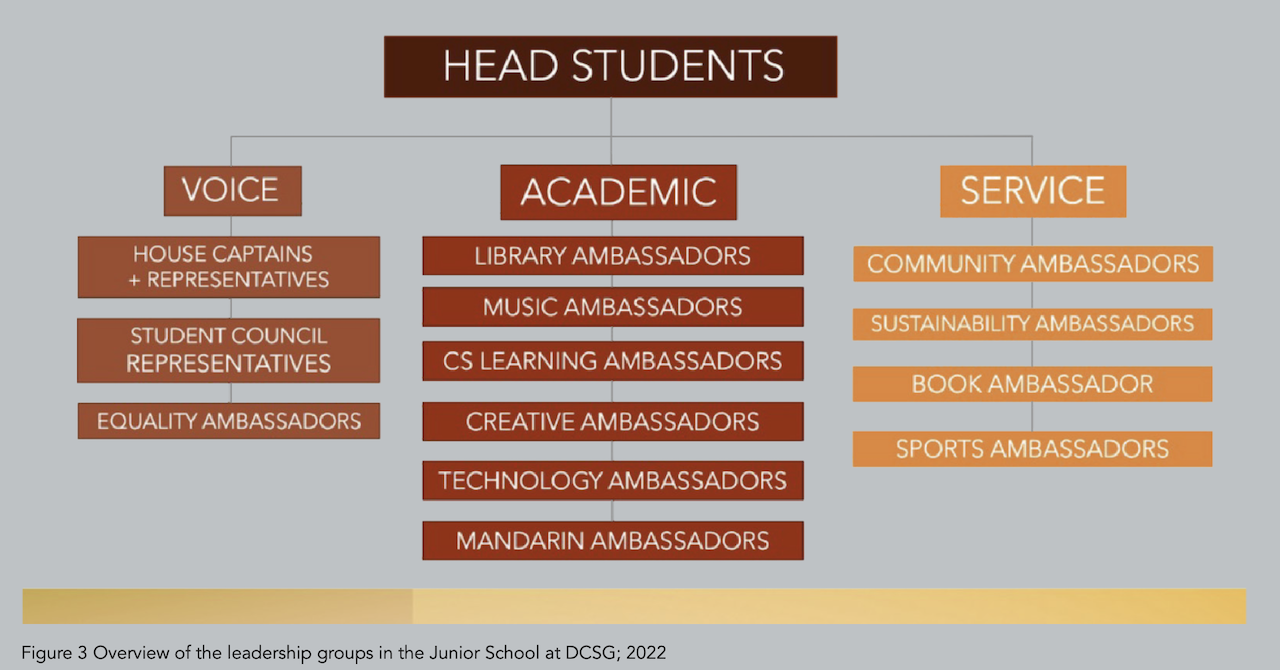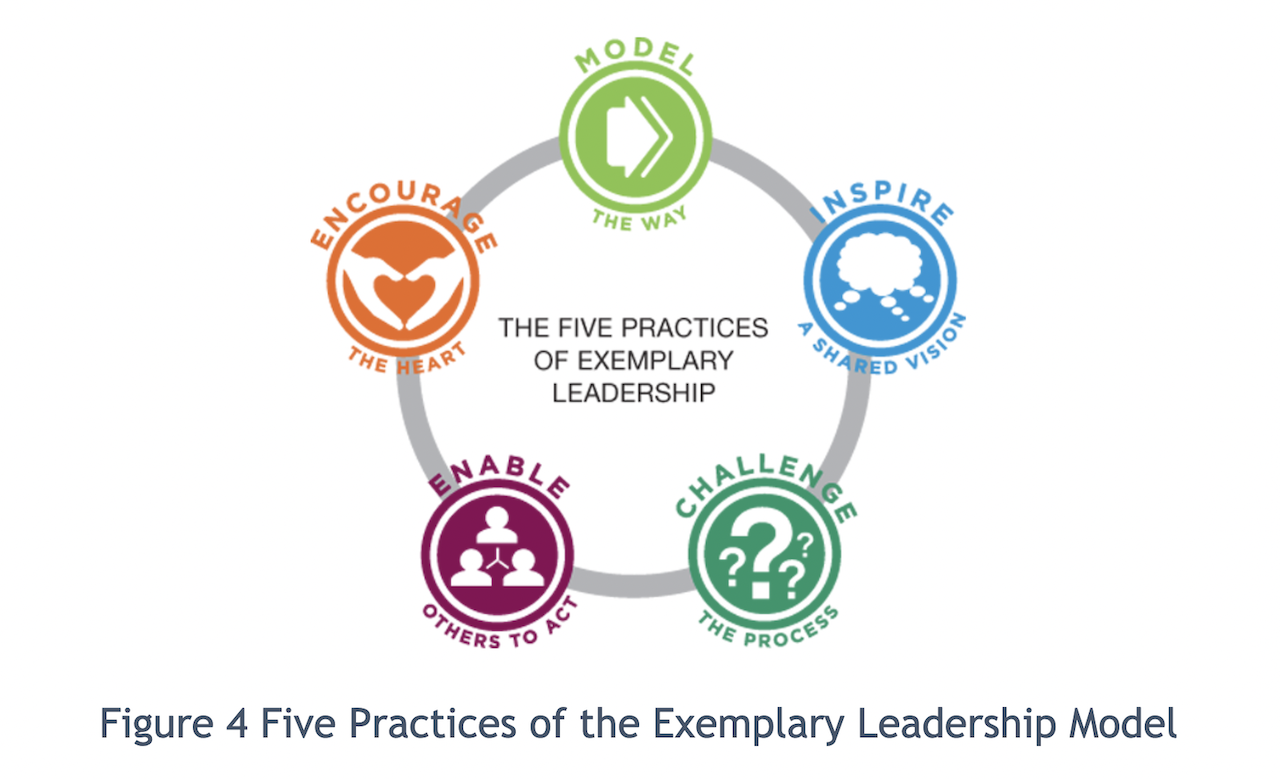Alleynian Review: Creating a Culture of Leadership

‘Leadership is not about being in charge. Leadership is about taking care of those in your charge.’ — Simon Sinek.
Recently, the world has been put under tremendous pressure through pandemics, climate change, and questionable political decision-making. Truly great leaders are not those that look to earn more or gain notoriety but those who give back to their community and share their knowledge. A positive leader is someone who nurtures those around them. They create a cycle of leadership within each new generation that inspires the next to innovate and move society forward.
So how do we ensure that our students at Dulwich College (Singapore) (DCSG) have the skills to negotiate their way through more turbulent times and the ability to help lead the next generation in the right direction?
Leaders as Role Models
One person who exhibited leadership skills and had a positive impact on the world was Martin Luther King. He was undeniably a great leader, but what made him stand out from the crowd?
Martin Luther King (MLK) was not interested in fame or power. He became a leader through necessity because of the tremendous social injustice black Americans suffered during the early 20th Century. He saw it as his duty to try to gain equality for the millions of people living through social division and suffering.
Why was he so iconic? MLK had the courage and determination (two of the DCSG character traits we encourage through sport) to take on an establishment and provoke conversation. He could bring people together from across a broad spectrum of cultures and backgrounds to unite in a common cause.
“Life’s most persistent and urgent question is, “What are you doing for others?” — Martin Luther King, 1957
Our goal at DCSG is to create a new generation of compassionate, innovative leaders who are determined to have a positive impact on the world around us. It is important to provide, model and teach examples of good leadership throughout the College.
Our Heads of House for Mandela, Earhart, Lee and Shackleton are all examples of good leadership but different leadership journeys and skillsets. Ensuring the use of good role models throughout our curriculum helps to instil similar values in our students. They experience them through the House system and can find out more about them by tracing their timelines, which wind up each of our stairwells on the way to class. As an organisation, we want to inspire children to dream big and recognise what can be achieved by an inspiring leader.
Student Agency
Student agency is another essential tool in providing students with the opportunity to ‘flex their leadership muscle.’ Student Agency is defined as allowing students to take on the role of the agents of their own learning while teachers serve as the facilitators.
Developing leadership across a wide variety of platforms is considered to have beneficial effects on well-being and academic outcomes, which later can have positive socio-economic impacts within the community. (Hallinger, 2003; Leithwood, 1992; Marsh, 2012)
One of the cornerstones of a good leadership system is allowing student agency to flourish within a school. Understanding student perspectives may be crucial for planning programs that will be attractive to a wide range of student interests and abilities. (Person, Ferdinands and Evans 2019)
We have tried to ingrain agency within our curriculum. Across all year groups in the Junior School, students partake in projects where they are given more choice in their studies, how they will facilitate this, and how they will present their learning. An example of this is our Humanities inquiry topic in Year 6. Before the unit has started, pupil opinion is canvassed on the topic through an entry survey. This allows students to voice their opinions and empowers them because they have ownership over their learning. It shows that we value what they think and that adults will listen to their ideas.
Ensuring students are engaged has been shown to be an important factor in their progress. (Ferlazzo 2019; Pritchard et al. 2008; Michael 2006; Carini et al. 2000) It also benefits teachers by showcasing what students already know on a topic, preferred working methods and what areas within a topic most interest them.
During the inquiry, students are taught about a religion. They are then encouraged to apply their new skills on a religion of their own choosing; they also have the choice to either work in groups or independently. The process has been aided by the fact that students all have access to devices which gives them more independence over their learning. The devices provide the flexibility to learn using their strengths, whether that be visual, auditory, reading and writing, or kinaesthetic. Personal student efficacy for self-development has expanded significantly with the Internet. The Internet provides vast opportunities for students “to control their own learning” unrestricted by time and space (Ferlazzo, 2019) (Bandura 2001: 10)
At the end, students are then given a chance to reflect and provide feedback to us about the topic. By asking the question ‘what did you enjoy?’ and ‘what would you change?’ we give them a voice.
Below are some examples of a recent survey on a Year 6 Humanities topic. This not only helped teachers plan for the next topic but also helped them to evaluate the past and look at ways to increase student engagement.


Create a strong leadership model
At DCSG, we provide students with the opportunity to voice their opinions on several different platforms through our broad student leadership system.

The purpose of the teacher is to be a facilitator for the student's ideas. We are there to help nurture their proposals and support students to bring them to fruition. Teachers set clear expectations in their groups, but the emphasis is on the students to develop the ideas and create a plan of action. Often roles can be assigned within the group allowing students to experience different responsibilities. You may have a student take the minutes for the meeting or a student chair the meetings on rotation.
The leadership system runs both vertically and horizontally throughout the school, allowing students to experience different types of leadership. This can be as part of a student leadership group, but it is also important to remember that there are many other forms of leadership they are exposed to through CCAs, enrichment weeks, Model United Nations Ambassadors, the curriculum and many more.
Through leading a group, students learn how to resolve conflicts, prioritise, manage their time and manage resources while advancing confidence and agency. While some students are more natural leaders than others, leadership can be developed in everyone. In the Junior School, we try to follow a model closely linked to the five practices of exemplary leadership.
Jim Kouzes and Barry Posner talk about the five practices of Exemplary Leadership, which are featured below.

Ensuring students follow these key steps helps create a stable leadership model and allows them to follow a personalised leadership experience. One where they can try different forms of leadership and discover where they feel most passionate. Where they can try and fail at something and then be given the tools to reflect on this and decide on the positives that can be taken from it.
1. Model the Way
Teachers and students demonstrate their beliefs, values and leadership daily. They take the initiative and set expectations. Through our leadership groups, students use the UN Global Goals to focus their ideas and decide on areas of the school they would like to develop. An example of this is our Student Councils, which recently helped create a child-friendly behaviour policy and held discussions around the school uniform.
2. Inspire a Shared Vision
We want students to feel like they are in the best school in the world. We are reminded by our Head of College to ‘Reach for the Moon’ and go from good to great, something that is passed down to our students. We try to give students the opportunity to envision what the best version of the school can be and challenge them to come up with ways to achieve this. Our Sustainability Ambassadors have been instrumental in helping to make the school a more eco-friendly environment, and we now have water dispensers across the school, which has helped save over 220,000 plastic bottles as of March 2022. We want leaders who have the desire to make something happen, change people’s perspectives and come up with ideas that innovate.
3. Challenge the process
Good leadership often involves a change from the status quo. It is always important to challenge the process and innovate, whether it be a business, product or educational setting. There are many examples of this throughout the Junior School, from Equality Ambassadors to our House Captains. Students are invited to participate in school-wide surveys and boardroom meetings with stakeholders and share their conclusions with others. As a school, we should always find ways for students to challenge us and ensure they are listened to.
4. Enable Others to Act
Kouze and Pouzner talk about ‘A leader's ability to enable others to act’ as being essential. If a leader builds confidence in people around them and inspires them, then they will give everything to succeed and, in turn, become leaders themselves. Our senior leadership team and Head Students regularly meet with the other student leadership groups, encourage their ideas and offer support. They often consult their peers through class surveys and discussions and look for ways to encourage others to take the lead in different events through our House system. Funds are made available for sustainable ideas and projects brought to the school by the student body.
5. Encourage the Heart
Breaking barriers and creating change can be a difficult task. It can take a lot of determination and patience to lead others to a common goal. It is important that the students know we care and feel they have a voice. Our Compassionate Systems Learning Ambassadors are helping to teach students about empathy and encourage the use of our check-in system across the Junior School, which helps to create increased self-awareness and connect different groups. Student leaders have the chance to showcase their projects through the boardroom meetings previously mentioned, assemblies focused on their areas of expertise, a Student Leadership Fair at the end of the year and other online platforms.
The importance of belonging
One of the most important aspects of a sound student leadership system is the community it creates. These groups help to tie the school together and drive it forward.
Our House system is a great example of this. Now more focused on collaboration than competition, our House Captains and Representatives collaborate to provide opportunities for students to take part in activities they enjoy. The Captains help to mentor their younger counterparts and, in the past, have helped to mentor students in the lower school. By giving students a voice and the chance to help shape their school, we create a community that cares for each other and gives a sense of belonging. The House system at DCSG is a huge part of what helps make us ‘one family of schools’ and part of the fabric of our school community. It is also a foundation for our young leaders as it transcends different year groups and subjects and can inspire leadership in various fields.
In conclusion, student leadership is about balance. It is striking the right note between giving students the opportunities to voice their opinions and using our own experiences and wisdom as adults to guide them along this journey. It is about inspiring a shared vision of what the future may look like and ensuring our students actively challenge the world around them to be better. By giving students increased opportunities to experience different forms of leadership but also the opportunity to fail, we are developing their critical thinking skills, empathy and self-confidence to take risks and accept new challenges. Students feel empowered and achieve more when they are given a chance to lead their own learning. This, in turn, helps to develop a new generation of leaders who will hopefully look to lead by example. So how do we create a culture of leadership to enable students to have a positive impact on their future? Start by asking them and see where it takes us.
References
Hallinger, P. (2003). Leading educational change: Reflections on the practice of instructional and transformational leadership. Cambridge Journal of Education, 33(3), 329-352.
Johnson, J. W. (2012). The effect of high school outdoor-based adventure leadership programs in independent schools on personal effectiveness and locus of control (master's thesis). Prescott College, Arizona, USA.
Leithwood, K. A. (1992). The move toward transformational leadership. Educational Leadership, 49(5), 8-12.
Leithwood, K., Riedlinger, B., Bauer, S., & Jantzi, D. (2003). Leadership program effects on student learning: The case of the Greater New Orleans School Leadership Center. Journal of School Leadership, 13(6), 707-738.
Osterman, Karen F. “Students’ Need for Belonging in the School Community.” Review of Educational Research, vol. 70, no. 3, [Sage Publications, Inc., American Educational Research Association], 2000, pp. 323–67, https://doi.org/10.2307/1170786.
Bandura, Albert, et al. “Self-Efficacy Beliefs as Shapers of Children’s Aspirations and Career Trajectories.” Child Development, vol. 72, no. 1, [Wiley, Society for Research in Child Development], 2001, pp. 187–206, http://www.jstor.org/stable/1132479.
Anderman, Lynley H. "Academic and Social Perceptions as Predictors of Change in Middle School Students' Sense of School Belonging." The Journal of Experimental Education, original series, vol. 72, no. 1, fall 2003. JSTOR, www.jstor.org/stable/20152724. Accessed 16 Mar. 2022.
Blake, John. "The one thing about Martin Luther King Jr.'s greatness everyone keeps missing." CNN, 20 Jan. 2020, edition.cnn.com/2020/01/20/us/martin-luther-king-jr-listener-blake/index.html. Accessed 24 Mar. 2022.
Bruno, Jacob. "How to build student agency in your classroom." NWEA, 28 Oct. 2021, www.nwea.org/blog/2021/how-to-build-student-agency-in-your-classroom/. Accessed 12 Mar. 2022.
Ferlazzo, Larry. "'Agency' Lets Students 'Take an Active Role in Shaping Their Future.'" Education Week, 22 Oct. 2019, www.edweek.org/teaching-learning/opinion-agency-lets-students-take-an-active-role-in-shaping-their-future/2019/10.
Kouzes, James M., and Barry Z. Posner. The Student Leadership Challenge Deluxe Facilitator Set. 2nd ed., Hoboken, John Wiley & Sons, 2014.
---. The Student Leadership Challenge: Five Practices for Exemplary Leaders. 2nd ed., San Francisco, Leadership Challenge, a Wiley brand, 2014.
Penn State. 23 Oct. 2016, sites.psu.edu/leadership/2016/10/23/the-traits-of-a-leader-dr-martin-luther-king-jr/. Accessed 18 Mar. 2022.
Sinek, Simon. Start with Why: How Great Leaders Inspire Everyone to Take Action. London, Penguin Business, 2019.
Teacher Magazine. 31 Jan. 2019, www.teachermagazine.com/au_en/articles/student-voice-developing-student-leadership-programs. Accessed 12 Mar. 2022.
"Timeless Leadership Lessons: 16 Empowering Ways To Inspire Like The Late And Spectacularly Great Martin Luther King, Jr." Inspiring Leadership Now, www.inspiringleadershipnow.com/martin-luther-king-jr-leadership-lessons/. Accessed 15 Aug. 2019.
Northouse, Peter Guy. Leadership: Theory and Practice. 9th ed., Los Angeles, SAGE, 2022.





